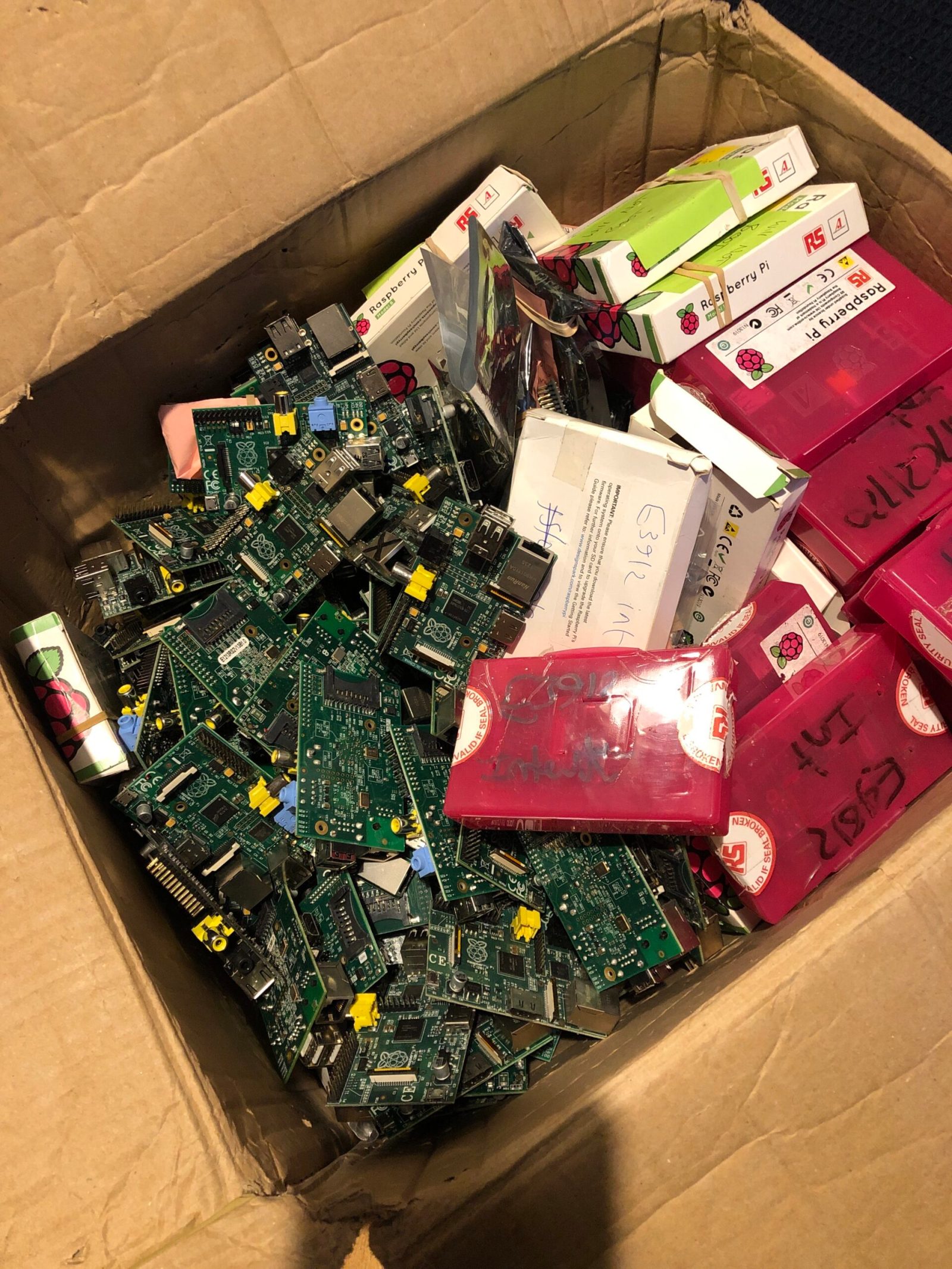
Engineer and blogger James Dawson specializes in reviews of single-board computers, but now he's started an unusual marathon, and at the same time decided to earn extra money. The engineer bought a batch of about 220 non-working Raspberry Pi Model B computers on eBay for 61 pounds, or almost by weight.
The task is this: diagnose the boards, find faults, fix - and sell. The boards are simple and seem to be easy to fix.
All purchased boards are Model B with 256 or 512 MB of RAM in different states.
Diagnostics
The first stage is to diagnose single-board devices and determine the malfunctions of each instance. How to do it? First of all, James divided the heap into two parts: which are loaded and which are not. He postponed the second group for later, and for the first he took a Pi 3.5 "TFT display and wrote a simple bash script to check the USB ports, Ethernet and video output.
It was immediately checked whether the GPIO pins were working, since the display was connected to them ( I2C, VCC and GND).
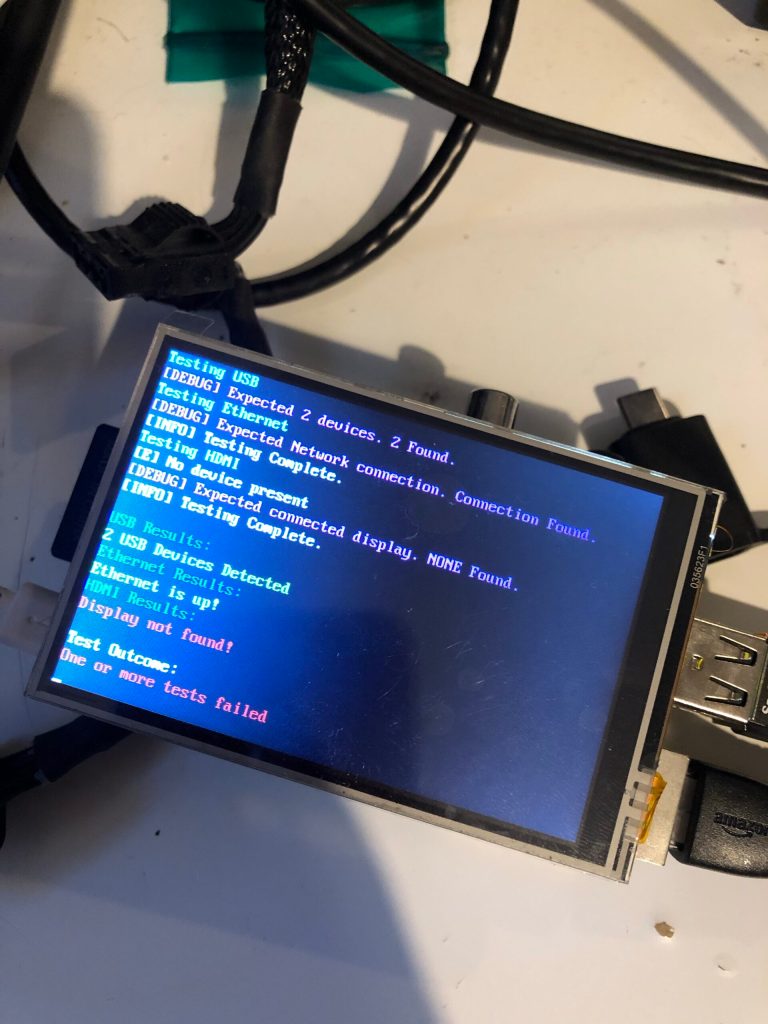
Peripheral testing
According to the diagnostic results, the following picture was formed:
| Malfunction | number | Repaired | Not repaired |
| Fully working | 67 | n / a | n / a |
| Broken SD card slot | thirty | 0 | thirty |
| Broken USB connector | 14 | 14 | 0 |
| Burst filter capacitor | ten | ten | 0 |
| Do not load | 80 | 0 | 80 |
| No Ethernet | 12 | 0 | 12 |
| No HDMI signal | 7 | 0 | 7 |
The table also shows the number of boards that the engineer immediately repaired using parts from faulty boards.
In addition, 67 boards in the batch were actually fully functional and did not require repair.
Repairs
James Dawson says he won't repair boards with physical damage or no HDMI signal, although the latter can be downloaded and used without a monitor.
Among those boards that do not boot, most look like they just have damaged power supply circuits, and everything else looks working. The engineer is going to deal with them last.
Many boards turned out to be fully functional, just the GPIO pins were bent there. It seems that some owners are throwing out their "raspberries" because of this "malfunction". Another common cause of failure is a faulty USB connector. Although “faulty” is a poor word. They were usually broken down by the roots.

Straightening them with a metal ruler is a matter of minutes. In some boards, missing pins had to be inserted.
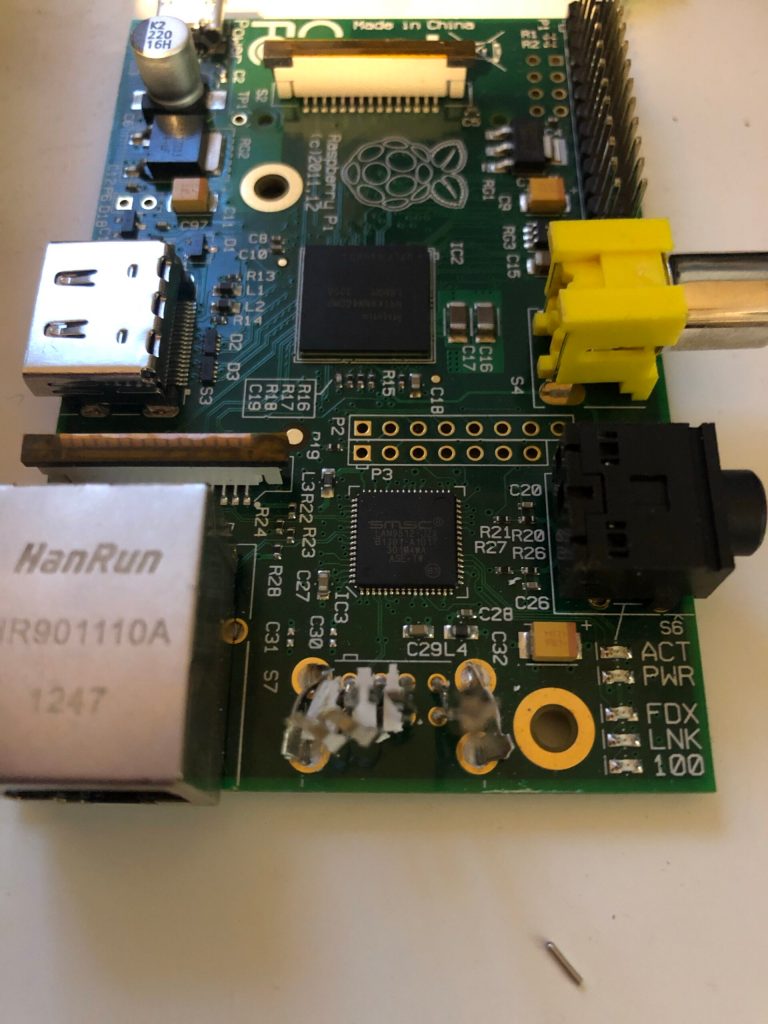
Fortunately, in a batch of 220 computers there were quite a few "dead" boards from which you can borrow these connectors so as not to waste money on buying.

So the dead boards donate organs to the living, and the entire batch of Raspberry Pi supplies the components for their repair themselves. Here the author did not lose anything. He says that of the 80 computers that fail to boot, 60 were beyond repair due to physical damage to the board.
The USB connector is simply soldered into place: The
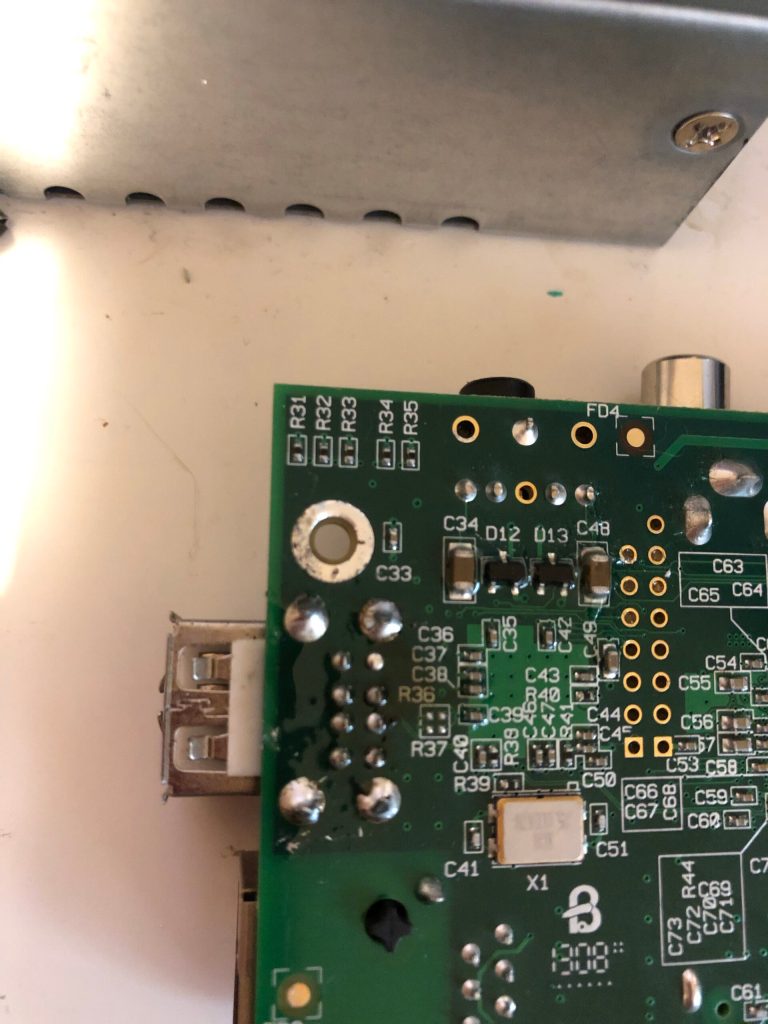
escaped capacitors were replaced in the same way. Although the board works fine without them, James decided to solder them back.

All this is a very simple repair, which can be done in just a few minutes if you have a soldering station and experience in soldering.
Unfortunately, SD card slots cannot be supplied in one module, like USB. Now the author is waiting for a batch of SD connectors from AliExpress to replace 30 faulty ones. On AliExpress, they cost a penny if taken in bulk.
As for the cards with non-working Ethernet, James plans to simply unsolder the microcircuit and the network connector from them, which de facto turns Model B into Model A, which he will already sell cheaper.
It is not yet clear what to do with boards that do not have HDMI video output. In principle, they also work fine without a monitor, and for many applications, a monitor is not needed. For example, if the Raspberry Pi plays the role of a router or media server. They may also go on sale at a discounted price.
Initially, the author planned to sell work boards at prices ranging from £ 5 to £ 9 a piece (£ 5 for Model A, and a maximum price of £ 9 for Model B, which did not require any repairs at all). In reality, he listed them on eBay in pairs of £ 15, excluding shipping. Each pair has one refurbished board and one that did not require repair.
Thanks to the fact that the post from the blog got to the tops on HN and Reddit, business is going well: in the last 24 hours, 19 pairs of Raspberry Pi Model B have been sold, that is, 38 pieces.
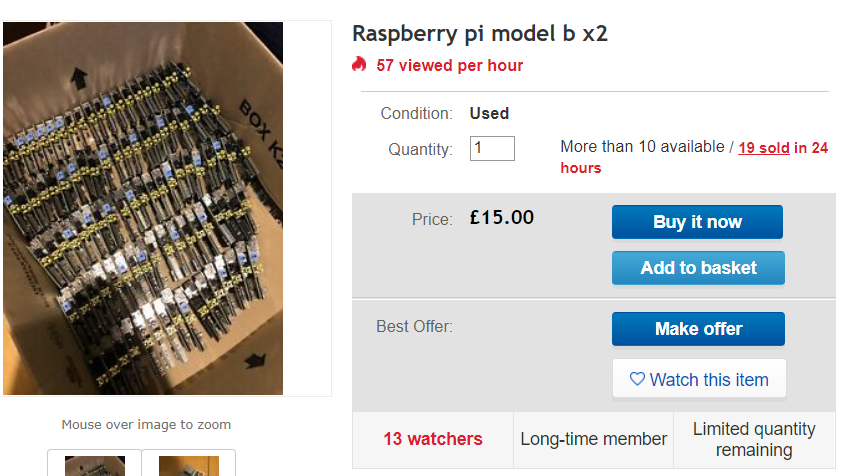
It’s not hard to calculate how much the engineer would make for 67 fully working and 24 refurbished computers, plus 12 Model As if sold for between £ 5 and £ 7.5.
But let's count all the same. The initial investment returns around £ 742.5 (91 * 7.5 + 12 * 5), and that's just a couple of days of work ... Keep in mind that when the SD connectors come from China, he can fix another 30 pieces, and that's another £ 225 (minus the cost of SD connectors) if you count the refurbished £ 7.50 Model Bs.
A total of £ 61 becomes £ 967.5 minus the cost of SD connectors from AliExpress. Although, of course, sales would have been more modest without the promotion of the project in the blog. Now the entire lot on eBay will be sold out in 2-3 days, and without promotion, there is a possibility that they would have to be sold for 2-3 months.
But it still seems that the soldering iron is a very profitable tool, and flea markets with broken iron are a bottomless source of cheap components. Surely someone is already in this business on an ongoing basis, because the idea lies on the surface, and the profit is tenfold, as this illustrative example with the Raspberry Pi shows.
PS And from the point of view of ecology, recycling electronics and bringing it back to life is a plus for the author's karma.